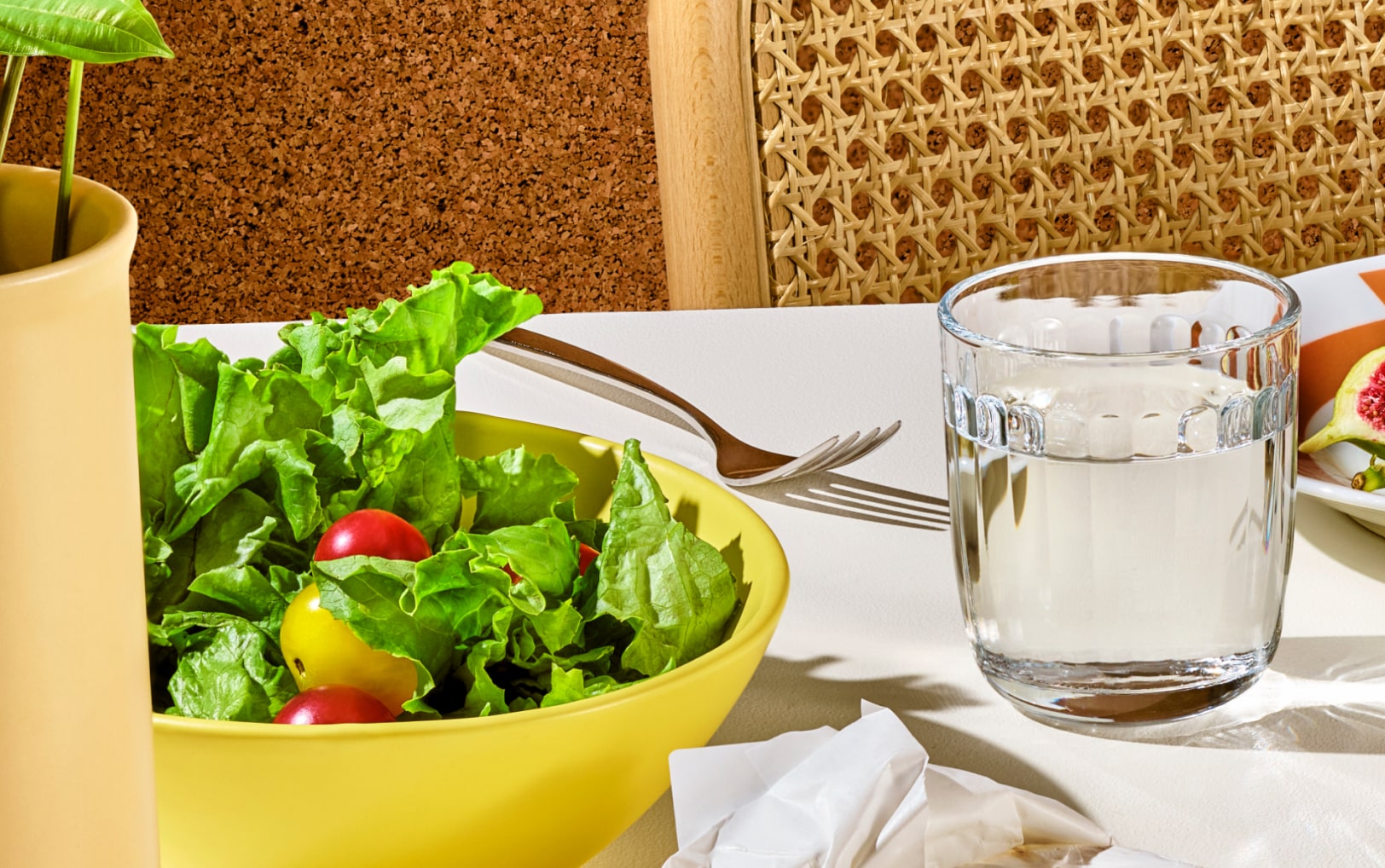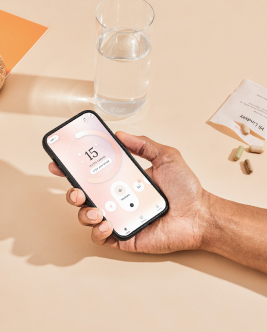nutrition
The 20 Top Prebiotic Foods - Why You Should Make These Part of Your Diet
On This Page

There are many food options that contain prebiotics. We have put together a list of the top foods you can include in your diet.
What are prebiotics?
The gut is one of the most important systems in the body. Gut health has far-reaching impacts on overall health, including metabolism, immunity, urinary tract health, nervous system, and the cardiovascular system. Understanding how the gut works and how to support it are essential for lasting health.
The human gut contains trillions of microorganisms including bacteria and yeasts which, when in the right balance, work synergistically with the body to maintain health. Just like your own body needs food to thrive, these microbes require their own version of food to provide their various health benefits to the body.
Prebiotics are non-digestible fibers and components of the foods you eat that act as food for gut bacteria through a process called fermentation. These fibers are carried throughout the digestive tract without being absorbed through digestion. Instead of providing the body with direct nutrition, as food does, prebiotics are stored by gut bacteria in the colon or large intestine, further down the digestive tract.
How do prebiotics help support your gut microbiome?
Prebiotics promote the growth of healthy bacteria in your gut. Keeping a balance of the many types of microbes in your gut is important for gut health as well as overall health.
A healthy gut microbiome aids in maintaining the strength and integrity of the intestinal lining, a major way in which your body keeps a safe internal environment. Some bacteria can produce beneficial compounds called short chain fatty acids by breaking down prebiotics. Intestinal cells can utilize short chain fatty acids to maintain viability and strength. These compounds can also circulate throughout the bloodstream to provide benefits to other systems of the body, like the cardiovascular system.
Protective gut bacteria can also stimulate secretion of immune compounds to boost your immunity. These good bacteria also help inhibit growth of unhealthy bacteria, maintaining a healthy ecosystem in the gut.
The difference between prebiotic, probiotic, and fiber
So what’s the difference between prebiotics and probiotics? And how do other fibers play a role in the gut?
As mentioned, prebiotics are an important food for gut bacteria. These can be found naturally occurring in certain foods as well as in supplements in capsule or powder form. A food is considered prebiotic if it meets the following criteria:
- Unable to be digested and absorbed by the digestive tract;
- Fermented by intestinal microbes;
- Can selectively stimulate the growth or activity of beneficial gut bacteria to promote human health.
Most prebiotics are actually types of fiber, but not all fiber is considered a prebiotic. Dietary fiber is a category of nondigestible carbohydrates that make up the sturdy structure of the plants we eat. Prebiotic fibers are fermentable by bacteria and can selectively increase good bacteria, whereas some fibers are not fermentable.
Probiotics, on the other hand, are live beneficial bacteria that you can get in fermented foods or supplements. Probiotic-rich fermented foods include yogurt, kefir, uncooked sauerkraut, kimchi, and kombucha.
Although research suggests the probiotic bacteria you consume do not colonize the gut permanently, they do exert benefits for the time they do spend there. Probiotics that you consume may help create a supportive environment that encourages the growth of good bacteria and yeasts that are already present in your gut.
Foods high in prebiotics
Prebiotics are naturally occuring in some plant based foods. Many foods containing prebiotics also contain other beneficial compounds, such as polyphenols, that can also enhance gut health. Incorporating more of the following prebiotic foods in your diet may boost your gut health and overall well-being.
Apples
You’ve probably heard the old adage, “an apple a day keeps the doctor away.” While that might not be an absolute truth, apples do possess beneficial nutrients and prebiotics including pectin. This prebiotic can favorably modulate the gut microbiome by enhancing production of the short chain fatty acid, butyrate, which can strengthen the gut lining.
Asparagus
Asparagus is one of the best sources of prebiotics. In particular, asparagus provides a type of prebiotic called fructans. In addition to fructans, asparagus contains polyphenol compounds that provide antioxidants and enhance the overall health benefits of this vegetable.
Bananas
Perhaps one of the most common fruits, bananas provide more than just a sweet snack. In addition to being rich in vitamins, minerals, and fiber, bananas contain prebiotics. Bananas provide small amounts of the prebiotic called inulin. Unripe, green bananas are an excellent source of resistant starch. This special type of starch resists digestion in the gut and can be fermented by gut bacteria. Resistant starch can increase production of healthy short-chain fatty acids for certain gut bacteria.
Garlic
Garlic is known for both its incredible flavor as well as its many health benefits. One of these benefits is providing a good source of prebiotic fructan. One in vitro study found that garlic can significantly boost bifidobacteria, a key beneficial bacteria that supports a healthy gut microbiome.
Onions
Garlic’s culinary cousin, onions contain a class of prebiotic fibers called fructooligosaccharides, or FOS. This prebiotic is increasingly being used in food products, infant formulas, and probiotic supplements to promote the growth of healthy bacteria in the gut. A study comparing the addition of prebiotics versus probiotics in infant formula found that prebiotics in formula resulted in more favorable changes in the gut environment of the infants.
Mushrooms
Mushrooms are an up and coming component of functional food products, some for their adaptogenic qualities and others for their prebiotic benefits. They provide a multitude of prebiotics, including galactans, xylans, chitin, and beta- and alpha-glucans. With so many varieties of mushrooms available in many grocery stores, these are a culinary delight for your microbiome!
Barley and oats
Barley and oats are two humble grains that pack a punch of health benefits. In addition to providing several B vitamins and minerals, these grains also contain beta-glucans, a type of prebiotic with proven benefits on metabolic health, gut microbiome, lipid metabolism and blood sugar balance (already in normal range), and weight management. The overall fiber content of oats and barley can help soften stools and support healthy bowel movements.
Kidney beans, chickpeas, lentils
Beans, chickpeas and lentils are excellent sources of dietary fiber, and when added to your eating regimen can easily help you meet recommended dietary fiber intakes of about 25-30 grams or more daily. They are also a good amount of plant-based protein and vitamins and minerals, making them an all around rockstar of nutrition.
These legumes also provide prebiotics, including resistant starch and galactooligosaccharides, or GOS. While these foods are well-known for often causing gas thanks to the GOS, they can also support healthy bacteria levels in moderate amounts. When looking to support digestion of high fiber foods, using enzymes can support digestion. In general digestive enzymes can help your body break down foods and absorb nutrients. Alpha-galactosidase can help break down the starches and fiber while also managing potential gas and flatulence associated with large amounts of bean or legume consumption.
Cashews and almonds
Cashews and almonds, while perhaps best known for their healthy fat content and plant-based protein, are also an excellent source of prebiotic fibers. One study showed that almond consumption increased levels of certain gut bacteria including Roseburia, a key producer of the beneficial short-chain fatty acid called butyrate in the colon.
Jerusalem artichoke
Not to be confused with the common artichoke, Jerusalem artichokes are a root vegetable, also sometimes called sunchokes. When it comes to prebiotic fibers, Jerusalem artichokes are one of the most cited sources of these beneficial compounds and are one of the best food sources of prebiotic inulin. These root vegetables are often considered medicinal for their ability to support healthier levels of metabolic markers.
You can cook Jerusalem artichokes just as you would other root veggies, like potatoes. As an added benefit, they taste great roasted with olive oil, herbs and spices.
Dandelion greens
Although not as common as other dark leafy greens, dandelion greens are full of health benefits. They contain bitter compounds that give them a distinct flavor as well as support digestion and bile flow. They also provide prebiotic inulin as well as a host of antioxidants to help your body maintain health.
Overall, dandelion greens can support your digestive tract from top to bottom, supporting secretion of digestive juices as well as promoting growth of beneficial bacteria through its prebiotic properties.
Savoy cabbage
Savoy cabbage looks similar to regular cabbage but is distinct for the vein-like appearance of its leaves. It is part of the family of cruciferous vegetables, which provide a host of healthy compounds, including phytochemicals that can support proper cellular functioning. Savoy cabbage is different than regular cabbage in that it provides a moderate amount of fructan prebiotics per serving.
Chicory root
You may have started noticing chicory root in more food products in the last decade, as it is a popular ingredient added to boost the amount of overall fiber as well as prebiotic inulin fiber in various foods. It can often be found added to health bars, cereals, and even some functional drinks, including roasted chicory root tea, a popular alternative to coffee with similar flavor but without the caffeine. You can also buy fresh chicory root at some grocery stores and can prepare it by boiling, roasting, or sauteing like other root vegetables.
Konjac root
A root vegetable native to certain parts of Asia, konjac root is known for its starchy texture, which makes it a popular pasta alternative. When cooked, it has a gummy-like texture, thanks to the presence of a prebiotic called glucomannan. This prebiotic can help increase levels of short-chain fatty acids through gut fermentation as well as enhance immune function.
Burdock root
Burdock root is a long, slender root vegetable similar in shape to carrots. This perhaps lesser known vegetable is an excellent source of inulin and FOS prebiotics. Burdock inulin has been shown in animal studies to increase levels of lactobacilli and bifidobacteria, two of the most abundant and important healthy gut bacteria.
Yacon root
Although similar in appearance to a sweet potato, yacon root is unique for its refreshing fruity yet earthy taste and doesn’t contain starch. It can be eaten raw, as in shaved on top of salads, or cooked in a delicious stir fry. It provides an excellent amount of FOS prebiotics as well as antioxidant benefits.
Jicama root
Jicama root is becoming ever more popular as a tasty and healthy snack, perhaps because it’s a rare low-carb root vegetable. It contains a moderate amount of inulin prebiotic. Jicama has a satisfying crunch and can be enjoyed raw. It pairs well with sweeter flavors like cinnamon and nut butter and can also be shredded and added to salads.
Leeks
Leeks are part of the allium family, which also consists of garlic and onions, and tastes like a milder onion. Similar to the other alliums, leeks are high in the prebiotic fructooligosaccharides. Due to their more mild flavor, they are commonly used in large amounts in recipes for a delicious yet not overpowering flavor and crunch.
Flaxseeds
Flaxseeds are a common addition to smoothies, baked goods, and health bars to boost fiber content. Flaxseeds contain both soluble and insoluble fiber, making them great for both softening and bulking stools and have a demonstrated benefit of supporting healthy bowel movements. You can incorporate these seeds into your diet to boost fiber intake, with two tablespoons of ground flaxseed providing about 3 g of fiber. Flaxseeds can be found combined with chia seeds and pea fiber in our Chia-flax product dubbed “The Fiber Starter”. One scoop can be easily mixed into protein powder or yogurt and gives you 4 grams of fiber.
Seaweed
Seaweed is a versatile food rich in prebiotics. One study showed that seaweed boosts levels of short-chain fatty acids after fermentation by gut bacteria. It is now available in many forms, from traditional uses as seaweed wrappers in sushi and in seaweed salad, to more modern food products like seaweed snack packs and even seaweed seasoning blends.
Cocoa
Beyond its delicious flavor, cocoa is an incredibly healthy ingredient. It is rich in polyphenols which impart its antioxidant properties as well as its prebiotic-like effects in modulating gut bacteria. You can use cocoa as a way to add chocolate flavor to your meals and recipes without sugar.
Final takeaways
Prebiotic fibers are abundant in a variety of plant foods. From root vegetables to nuts and grains, there’s something for everyone! Incorporating foods that contain prebiotics into your eating pattern can give your gut a boost by promoting levels of healthy gut bacteria.



